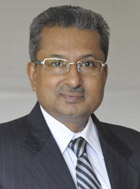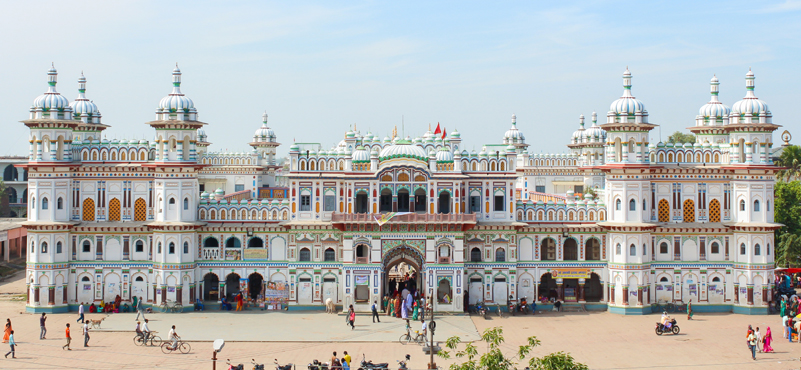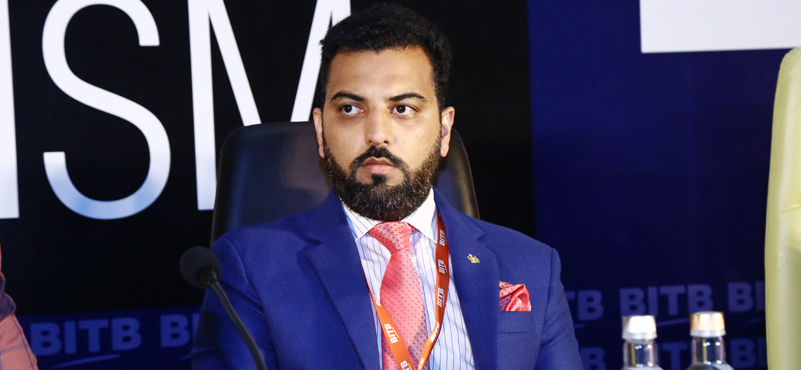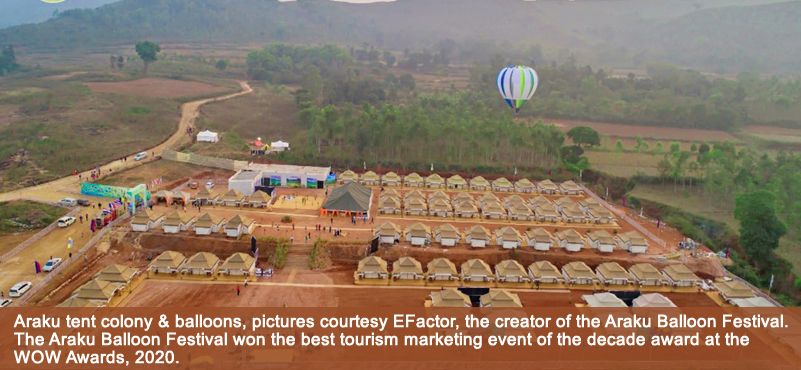Some may argue that, on the statistical front, inbound tourism into India has grown in previous years. However, this growth has not generated corresponding levels of revenue, because much of this new growth is originating from neighbouring countries, feels newly elected IATO President Pronob Sarkar. An exclusive interview:

India recently celebrated, with much gung-ho, clocking the coveted eight million mark in inbound numbers. But, given India’s diversity and scale of tourism offerings, many feel that the growth is slow and uninspiring. Pronob Srakar shared his concern about it, noting that IATO had taken up the issue with the ministry. “What concerns us is that the business for tour operators is down – irrespective of their size – which is because of lack of promotion. There are many regional tourism offices without any head in authority, so activities are not taking place at the rate they ought to,” he said.
Touted to be the biggest game-changer for tourism – e-visa – has also not been able to push numbers. According to Pronob Sarkar, despite of rolling out e-visa facility to over a hundred and fifty countries, the message had not gone to the actual user. “People of those countries need to know that India has done such a thing to be able to make use of it. We had a fruitful meeting with the ministry very recently where we were assured by the secretary that revamping of the ‘incredible India’ campaign with new advertisements will be undertaken. We have also taken the support of industry stalwarts to moot the way forward for better marketing and outreach,” he informed.
Highlighting the need for making e-visa facility friendlier to the end-user, he stated that currently, e-visa was not serviceable for multiple entry, and was restricted to duration of thirty days. “Long-haul tourists coming to India need more time, besides they also visit neighbouring countries like Sri Lanka and Nepal. These issues should be addressed, and these tourists must be given priority,” he passionately added.
Suggesting a change in duration of stay by extending it to a minimum of sixty days and, at least, allowing double-entry visa for easy movement and itinerary planning, he argued that applying for a visa a month before the actual date of travel was not very encouraging for a long-haul traveler – who wanted to buy early to get cheap tickets and accommodation. “In fact, we would, ideally, want a 180 days window for foreign travelers. We would want e-visa facility to be extended to cruise tourists. There are a number of cruises coming to Kochi and Goa, but they do not stay over-night, resulting in loss of business for constituents of the tourism industry,” he said.
Pointing towards the lacuna in the development of requisite infrastructure to attract cruise tourists, he had a word of praise for the incumbent government for addressing the issue. “The government, in a welcome move, has announced a sum of thousand crores to improve cruising and port related infrastructure,” he said.
In a bid to decode the inbound trend, he referred to statistical figures stating that while India had been registering growth in arrival numbers, but the influx, in terms of revenue generation in dollar terms, was coming from low-revenue yielding markets like Bangladesh. “There is a major percent growth from Bangladesh, and from destinations like Afghanistan and Nepal. These tourists are not high-spenders; tourists from Nepal mostly stay with their relatives and friends, adding little to the business of tour operators,” he explained.
Adding that if one anylazed India’s key revenue sources markets, he said that inbound had not really grown from destinations like Germany and France. “There is a minor increase from the USA and Canada. Therefore, we have requested the ministry to re-look at marketing, especially in countries under the ambit of e-visa facilitation. It will create sensitization for India, fueling demand for us.”
Having just taken over the reins of IATO, he believed that as the IATO president, he had also taken up the same mantra as the present government: ‘sabka saath, sabka vikas’. “Every member must give their inputs and be involved in the body’s activities. We, being based in Delhi, will be dealing with the central government and local authorities, and our regional chapters will focus on the requirements of state governments’. We want state governments to become more pro-active and come up with their ideas and agendas,” said Pronob Sarkar.
Taking stock of market dynamics, another major challenge for brick-and-mortar players – in the last decade and a half – has been the advent of online players. Driven by technology, and appreciated for their ease of booking, most of these players have assiduously cultivated a market for themselves leaving many of the traditional players in a precarious situation. “We used to get a lot of bookings for hotels and transport. It is true that online companies, because of their bulk dealings, are able to provide lower rates,” he said.
However, he contended that despite their growing presence, brick-and-mortar players were different in terms of quality of service offerings. “We offer a very personalized tour. It is the traveler’s confidence in us as providers. Tour operators generating business remain in touch with our members; they will not go to these dot com companies,” he asserted. He also said that many
strict cancellation policies adopted by online players were burning a hole in the consumer’s wallet, whereas brick-and-mortar players were more flexible and accommodative. “The consumer interface at online portals is bereft of human involvement. So, while we may lose out on tourists looking for cheaper version of tours and packages, but those seeking a personalized service with a human touch will continue to come to us,” he added.
He did concur that agents also needed to upgrade their systems and processes to come at a level playing field. “In fact, IATO will be very happy to help agent members in their attempt to improve their tech quotient. We are going to set-up a committee which will study on how to help agent members – who are willing to adapt to these changes. There must be a level playing; everyone must be on the same platform to compete in a fair manner,” said IATO president.
When we assess India’s standing as tourist destination on the global platform, our inbound numbers do little justice to our capability as a nation. A closer look at some of the successful global destinations reflects their innate ability to diversify source markets, escaping dependency on a handful of countries. India, barring a few exceptions, has not been able to develop new markets in the recent years. Pronob Sarkar argued that, India as a nation, was already giving thrust to positioning itself in new markets. “Russia is a key emerging market and charter business is very important for India. We have agents specializing in the Russian market and they, too, are very keen on some sort of promotional activities. Iran is another nation which is emerging at a fast rate. Maybe, the ministry could think of rolling out some discount for Iranian charters,” he said.
Sharing his understanding on why India had not been able to capitalize on Chinese outbound, whereas China had emerged as a key source market for many countries in Europe and in the Far East, he said “India will need to augment its infrastructure and components like adequate availability of language guides and Chinese cuisine. They travel in groups, therefore need bigger hotels with more keys. The cumulative effect of all these factors have resulted in lopsided movement of tourists who do come in some numbers to the Northern and Western India, but rarely venture down south,” he explained.
Further substantiating, he highlighted the need for a tweak on the policy front, saying that “money transfer from a Chinese to an Indian bank is not possible. There has to be some sort of a bilateral agreement to look into these issues. Chinese travelers prefer paying in cash, and it is difficult for Indian hotels to hold up reservations until guests arrive. So, these are some issues to my understanding.”




































